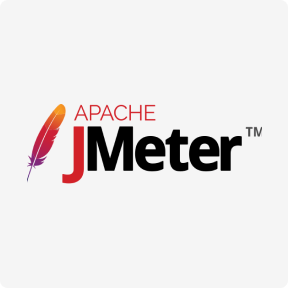In the Agile approach – recommended in software development – the team regularly meets, exchanges insights, and constantly optimizes the application. With a fixed price contracts, there’s no point in discussing new ideas because you can’t go beyond the scope, anyway. In the time and materials contract, you pay for the actual amount of work, based on a daily or hourly rate. That way, you pay for the hours and days developers spend on work. The contract outlines, that you will pay a contractor for the time the team spends working on your project and the materials they use to build it. Control – A fixed price contract gives you less control over the quality of your product and the fact if that fulfills your vision and requirements.
- Need a website builder that stores and automates important documents and contracts?
- Project requirements need to be written to define this scope of work.
- He holds a Master of Business Administration from Iowa State University.
- Regular reports ensure that each party knows of any issues or delays and can take corrective actions promptly.
- Dynamic pricing allows retailers to adjust their prices in real time, or at least frequently, to match the changes in the market and optimize their sales and profits.
Weighing the advantages and disadvantages of a fixed-price contract will help a small business decide whether to use one. This is why I always say – fixed price model is great for those projects that can be fully scoped right from the start. If that is not possible, it’s much better to go with another model. The most important thing to know before going with the fixed price model is the full scope of the project. Before we start working, before we even send an offer to our client, we really need to know at least 90% of all the aspects that need to be created and implemented. If we can’t define those 90% of all aspects of a specific project, then fixed price is most likely not the best model to go with.
When time and materials is a good choice?
Clients might wonder if they’re getting their money’s worth without a fixed price tag. Contractors need to be like an open book, showing their work, time, and expenses with impeccable clarity. To find out more about the advantages and disadvantages of turnkey projects and how H+M Industrial EPC can meet your capital project needs, contact us through our website today. For easy reference, we’ve outlined T&M contract pros and cons in the table below.
By using this pricing model, businesses can accurately forecast revenue streams and plan accordingly. Additionally, fixed pricing allows companies to avoid price fluctuations due to market changes or unexpected events. To get maximum benefits when choosing a fixed price model, it’s important that it fits your project size and complexity.
Learn How NetSuite Can Streamline Your Business
What’s more, the client will receive accurate reports containing detailed information on the progress of work on the project. Thanks to this set of elements, you get to see where your money is flowing, how much of the budget has been spent and how much you’ve got left. Also, you can see future forecasts and react accordingly if something isn’t working for you. If you’re trying to choose between these models, this article is for you. A business law practitioner by passion, I take pride in the perfection of my contracting Skills. Every piece of information I gather and spin together transforms to a legally binding document, providing great legal protection for start-ups and leading to eventual growth.

While there is no “right” contract type, both contract types are great choices for specific project circumstances. Below are detailed situations where T&M contracts vs. fixed-price contracts may be beneficial. On the other hand, Time-and-Materials gives full freedom to change product requirements on the go. The buyer doesn’t have to bother about defining rock-solid application documentation before their contract commences. It is convenient to sustain long-lasting projects, rapidly shift priorities, react to market challenges or opportunities, and so on. Also, to limit the risk of changing requirements, the software house usually charges a premium for the uncertainty (the less information, the higher the premium).
Introduction to Software Design and Architecture
Software development companies often create a project roadmap with internal deadlines and milestones, which then serve as the payment schedule. The predetermined price and scope of work that remain constant throughout the duration of the contract have their pros and cons. I never knew how difficult it was to obtain representation or a lawyer, and ContractsCounsel was EXACTLY the type of service I was hoping for when I was in a pinch. Working with their service was efficient, effective and made me feel in control. Thank you so much and should I ever need attorney services down the road, I’ll certainly be a repeat customer.
You must spend a fixed sum of money on building a product; this sum is based on the project’s scope and the timeframe you specify. With this type of contract, you can pay a single sum for all features, materials, and problem repairs. The final product needs to be exceedingly well-defined, right down to the tiniest detail, to function effectively in the fixed model. Another element of the fixed price model, I mentioned it briefly a couple of paragraphs before, is feedback. In this partnership model, clients get a specific number of iterations that can be done per phase of the project.
Our consultants will help you to supplement your team or build a high-quality mobile/web app

from scratch. Get expert engineers to supplement your team or build a high-quality app from scratch and bring
it to life. Whether or not fixed pricing works for your business depends on various factors including industry competition levels as well as consumer preferences and expectations.

The code quality might also not be the best, and as a result, the app will work slower or generate more costs. All those aspects mentioned above lead us to the final problem – the app is not what you expected. First of all, if you don’t agree fixed price model vs time and material to increase the budget, the developer has to search for a compromise between quality and cost. Therefore, especially if they agreed to incorporate into the project changes that were not contracted, some parts of the project might be omitted.